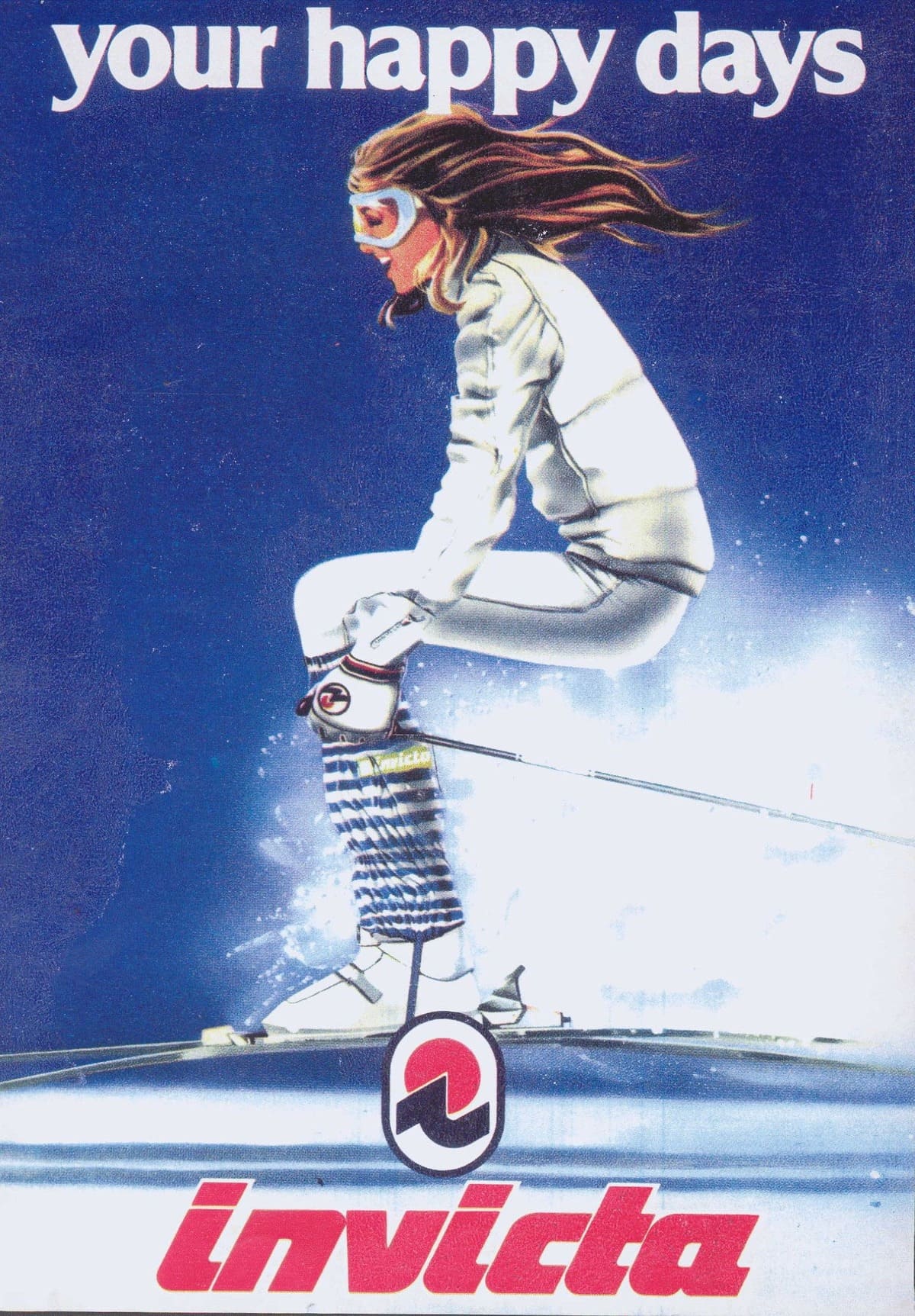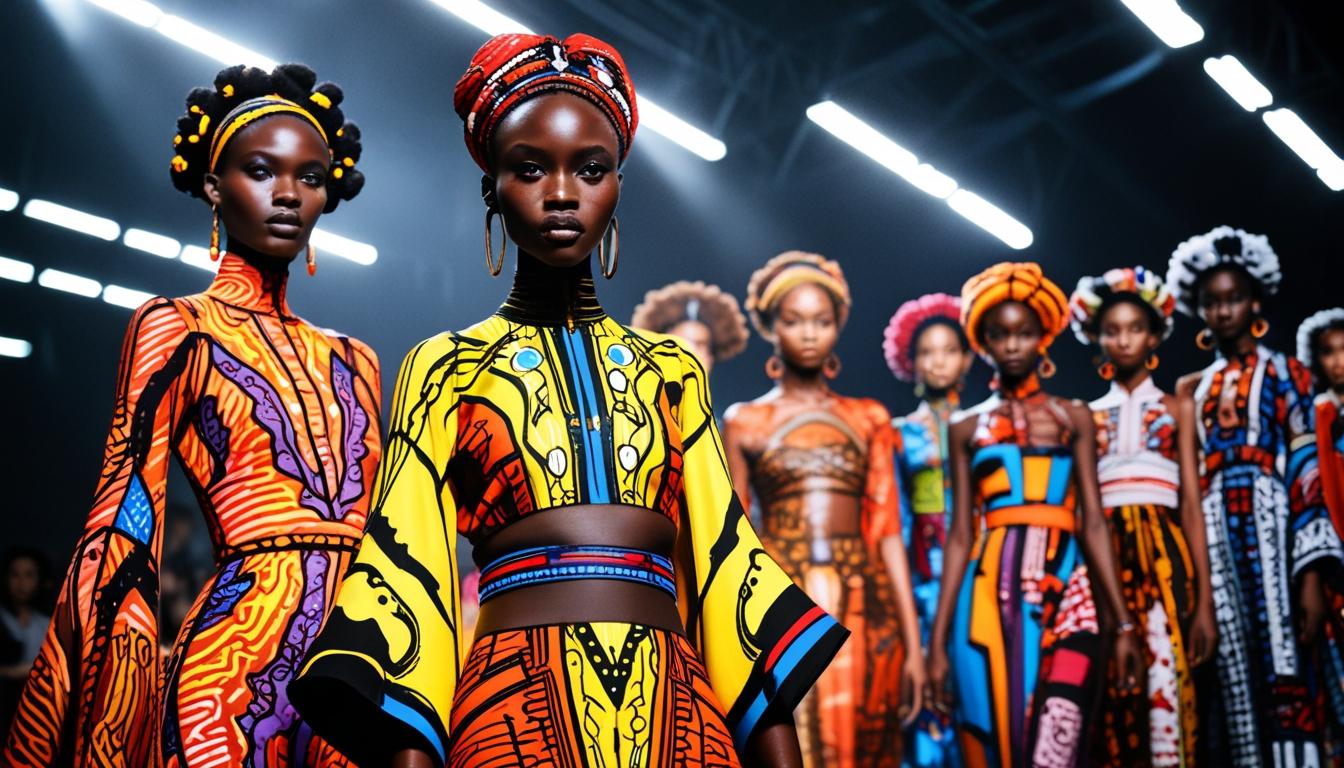Invicta, a name synonymous with quality and innovation, has a storied history dating back to its founding in 1906 in England. Originally known for producing bags and military equipment, the brand soon expanded its horizons. In 1921, Invicta established its first workshop in Turin, Italy, in the Borgo del Fumo district. Situated near the confluence of the Dora Riparia and Po rivers, this workshop became a hub of creativity and craftsmanship. Here, artisans dedicated themselves to creating innovative products, primarily backpacks and accessories designed for sports and mountaineering. One of their groundbreaking innovations was the introduction of the backpack with a bastino in 1933, a design that greatly facilitated mountaineers’ expeditions. This spirit of innovation and dedication to quality allowed Invicta to grow from the peaks of the mountains to the streets of the city, maintaining its adventurous DNA throughout its journey.
By the 1980s, Invicta had evolved into a cult brand, capturing the hearts of new generations with iconic products like the Jolly and Minisac backpacks. The Jolly became a defining accessory of the Paninari subculture, symbolizing the carefree and stylish spirit of the era. Originally designed as a ski accessory in the 1970s, the Minisac was embraced by young people in the 1980s for its innovative and distinctive design. Invicta’s commitment to exploration and freedom resonated with a broad audience, transforming their backpacks and garments into urban style icons. Whether scaling mountain peaks or navigating city streets, Invicta’s products embodied a spirit of adventure and limitless possibilities, making boundaries mere horizons and turning limitations into opportunities.
Throughout the decades, Invicta continued to innovate and expand its offerings, from technical ski gloves in the 1970s to urban fashion in the 1980s and beyond. The brand supported athletes like Gustav Thoeni and the Italian ski team, bringing their expertise from the mountains into everyday urban life. In 1988, Invicta became a pioneer in eco-sustainability by sponsoring Italy’s first environmental restoration project. This commitment to sustainability continued into the 21st century with the launch of the Re-ordinary lines in 2020, made from GRS-certified recycled materials. Today, Invicta’s collections, including Heritage, Legacy, and Trend lines, cater to a diverse audience that values aesthetics, activity, and environmental consciousness. Invicta remains dedicated to dressing those who seek to explore new spaces and redefine the known, offering products that blend style, color, and awareness.
How to tell if Invicta is vintage from the logo
Invicta is a well-known brand with a rich history, and its logo has undergone several changes over the years. Understanding these changes can help determine if a particular Invicta product is vintage. Here, we’ll look at the logos used by Invicta from the 1990s to the present day to help identify the era of your Invicta items.
1990s to now Invicta logo
- This era’s logo features a bold, modern design with a distinctive red and blue emblem.
- The emblem consists of a red circle partially intersected by a stylized blue “N” shape, which is a significant element of the logo.
- The word “invicta” is written in lowercase letters with a unique, slanted font that gives it a dynamic and contemporary appearance.
- The color scheme of red and blue is prominent, reflecting the brand’s energetic and robust image.
- This logo has been used consistently from the 1990s to the present day, making it a staple identifier for modern Invicta products.
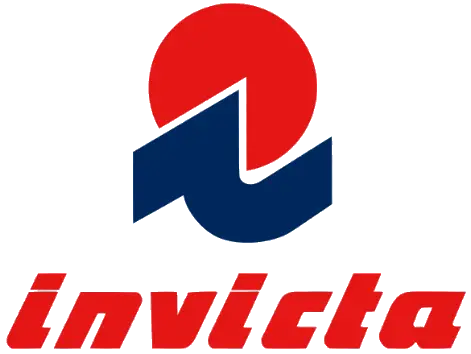
1990s to now Invicta logo
How to tell if Invicta is vintage from the tags
The evolution of Invicta tags over the decades reflects the brand’s journey and adaptation to fashion trends. From the bold and distinct designs of the early years to the more modern and streamlined looks of recent times, each era’s tags provide unique insights into the brand’s history and identity.
Having trouble identifying vintage tags or labels? Submit a picture on our vintage tag identification page, and we’ll assist you
1990s vintage Invicta tags
- Bold serif lettering in bright colors.
- Square or rectangular tags with a prominent “Since 1906” tagline.
- Tags often featured a dual-tone color scheme, typically with red and white or green and white combinations.
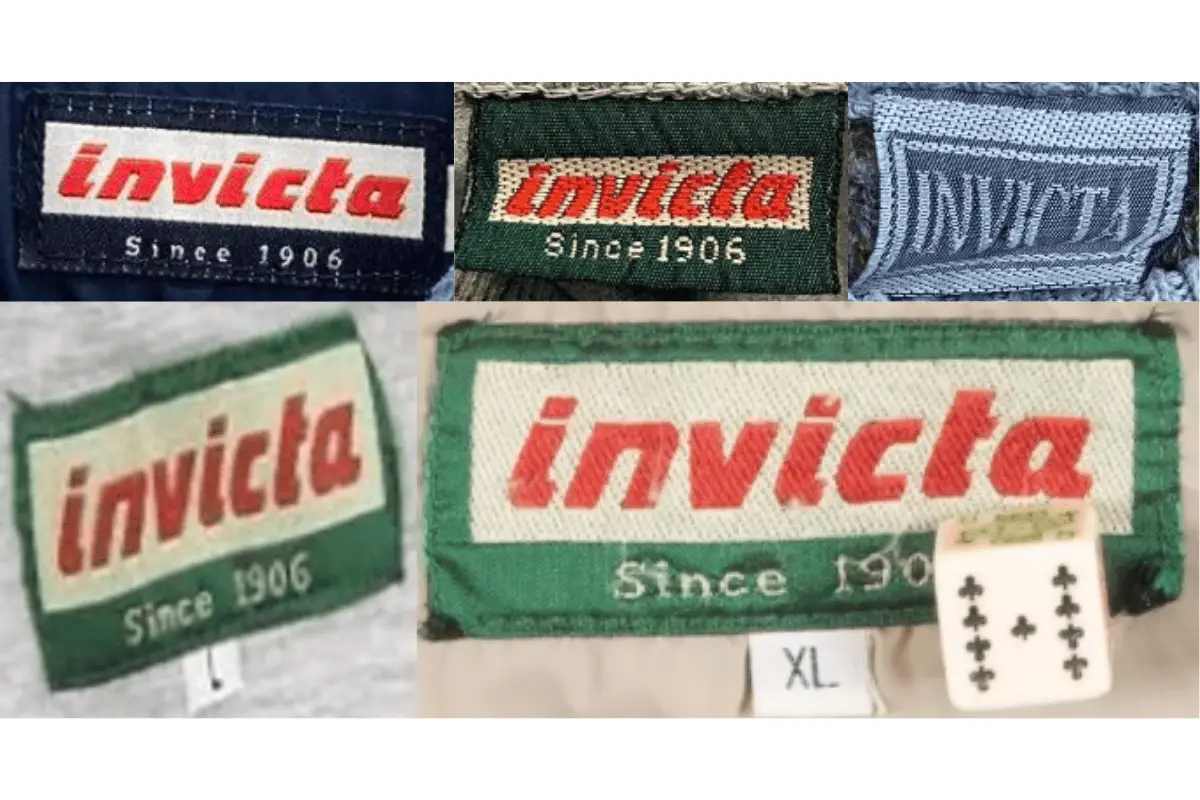
1990s Invicta tags
2000s vintage Invicta tags
- Continuation of bold serif lettering.
- Tags typically rectangular with a more textured fabric background.
- Retained the “Since 1906” tagline, emphasizing the brand’s heritage.
- Some tags included an additional size indicator tag attached below the main tag.
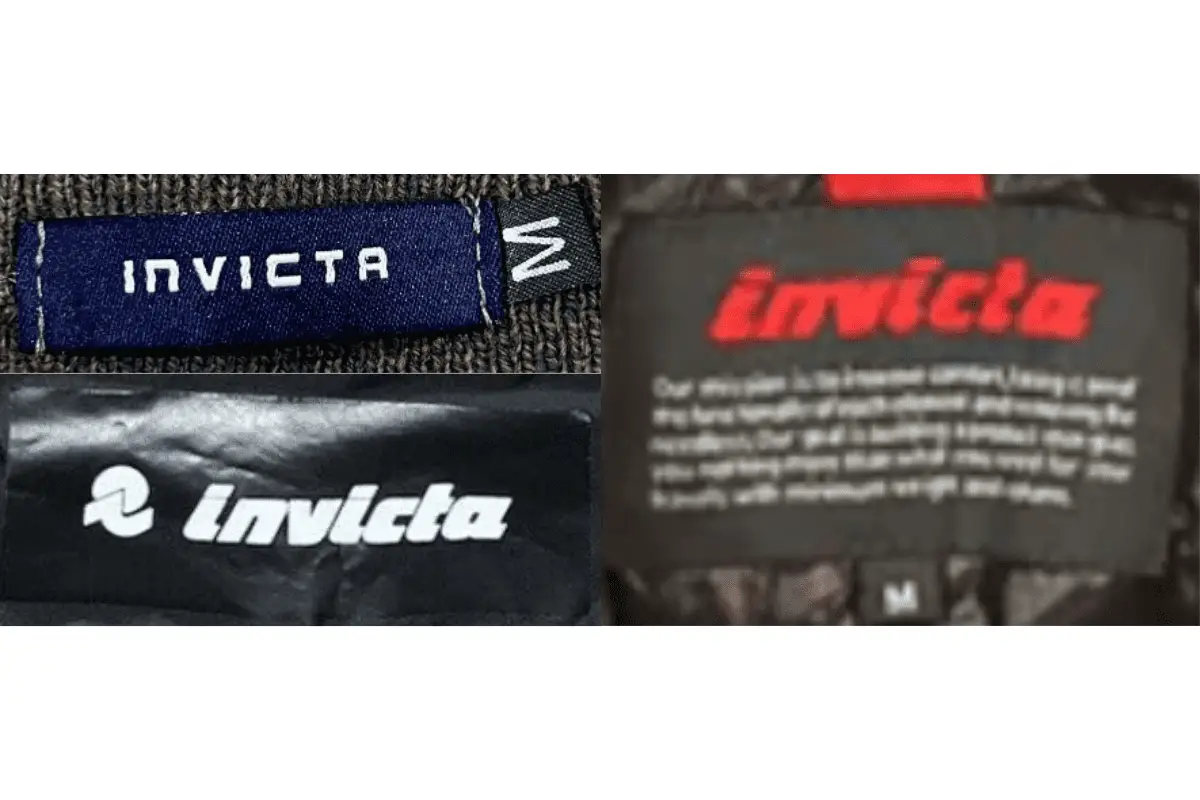
2000s Invicta tags
